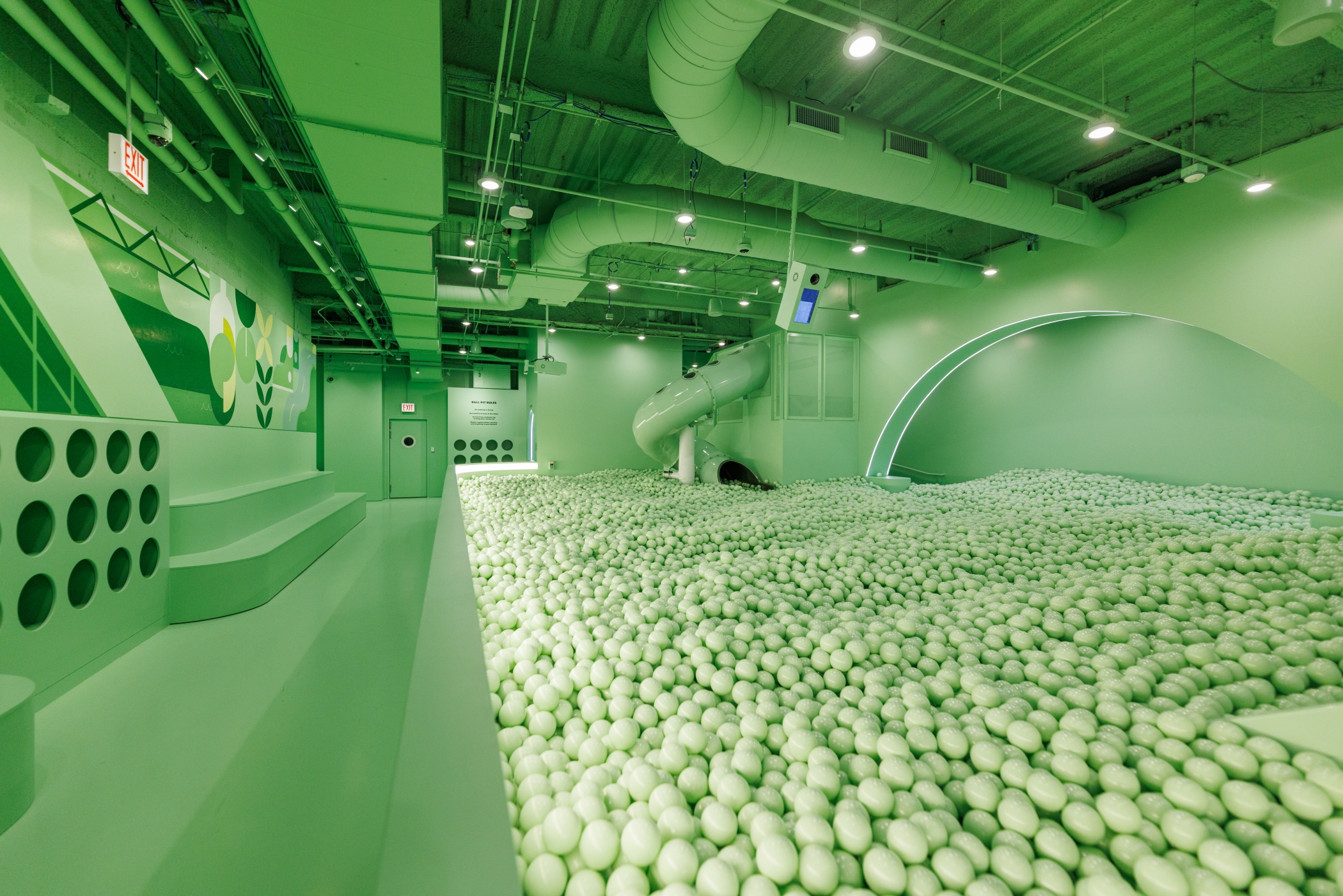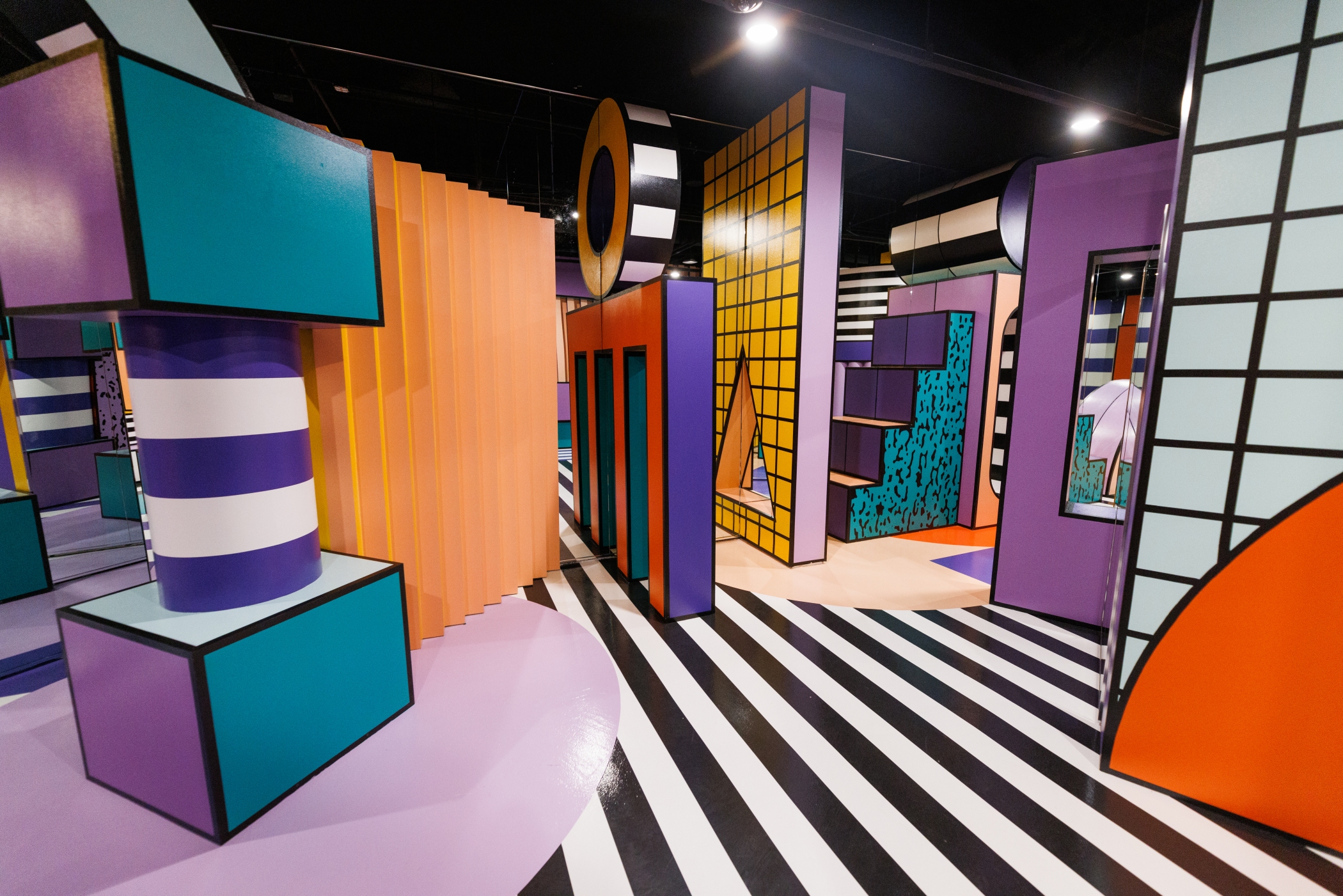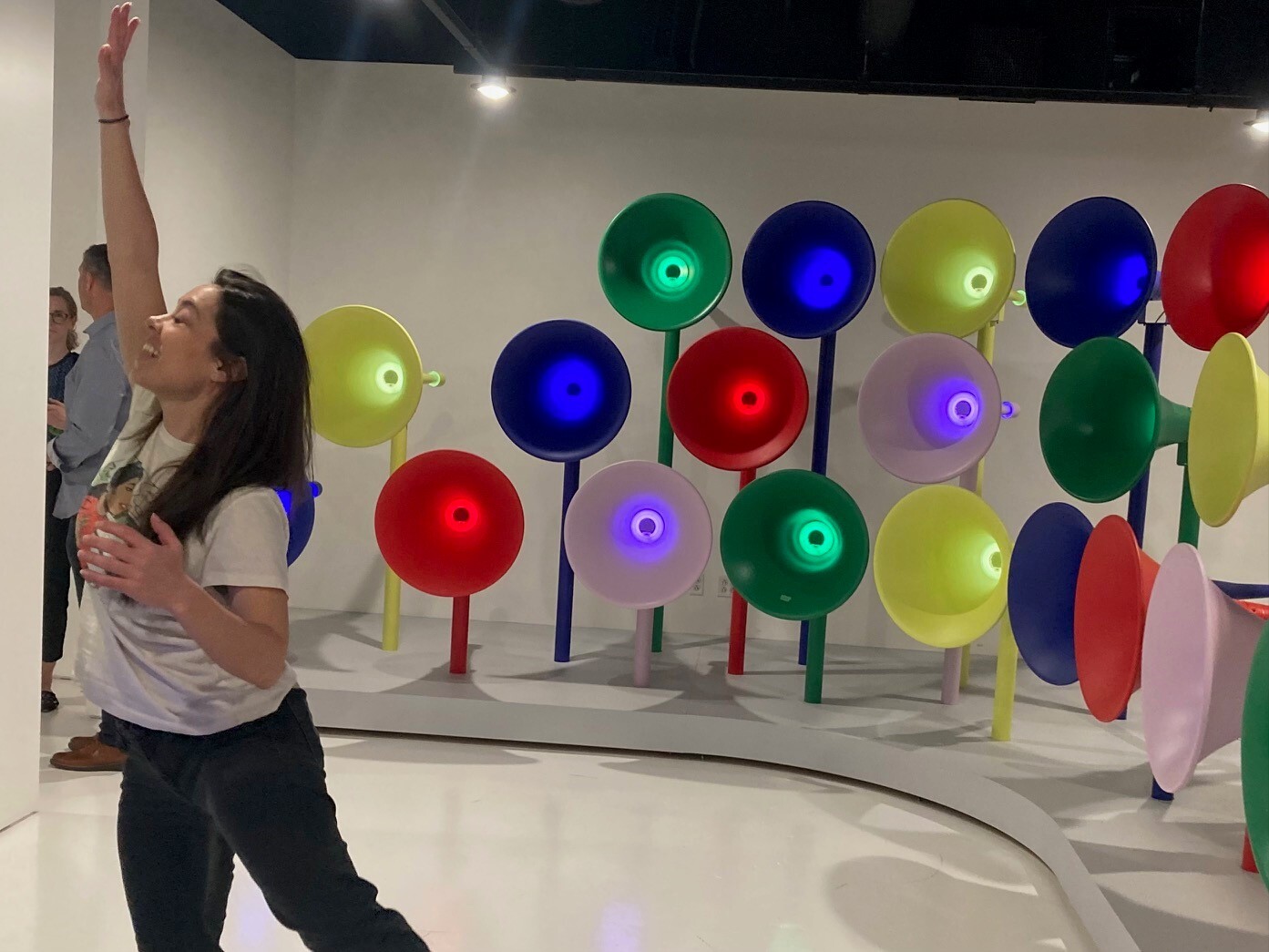About five years after launching as a retail pop-up in San Francisco, Color Factory is debuting its largest venue, a 24,000-square-foot, long-term space in Chicago that brightly illustrates the rising prominence of hands-on retail.
Color Factory opens Thursday in below-ground space within the 110-story Willis Tower, Chicago’s tallest skyscraper. A mix of art exhibits, multisensory experiences and Instagram-worthy photo opportunities, Color Factory operates long-term spaces in New York and Houston.
The high-profile Chicago location in the former Sears Tower, home to one of the city’s top tourist attractions, is a big step in the evolution of Color Factory — and the broader world of interactive experiences as retail throughout the United States.
“This was a really important shift in our brand,” Susan Retterbush, executive director of design, told CoStar News during a preview of the space. “We’ve kind of been more grassroots, historically. It’s a startup. We’re still a very small company. In New York and Houston, we’re in a prominent neighborhood, but maybe on a side street — in Soho but not on Broadway or West Broadway. We wanted this to really be our flagship.”
The opening comes after an unusually complicated, 16-week construction project led by local building firm J.C. Anderson. That project took place within what up until recently had been a much larger construction zone as part of Blackstone Group’s $500 million addition to the 1,451-foot-tall skyscraper.
That project, called Catalog, began before the pandemic. It added 300,000 square feet to the lower floors of the building at 233 S. Wacker Drive, creating new space for restaurants, retail and attractions such as Color Factory. At the top of the building, there are other added experiences as part of Skydeck, the observatory that attracts about 1.7 million visitors per year.

Color Factory is making a big, long-term bet that it can continue to stand out from a growing list of competitors — and sell enough tickets that, in Chicago, run $38 for adults and $28 for children.
The venture, which began as a pop-up in San Francisco that initially was meant to last a few weeks, signed a 10-year lease for space in the building.
Evolving Space
CEO Tina Malhotra declined to say how much the Chicago space cost to build or how many tickets the company must sell annually to be profitable. But it’s clear the Chicago construction investment far exceeds the shoestring budgets on which so-called experiential concepts once operated.
Unlike most build-outs, J.C. Anderson began the project with plans in hand only for about half of the total space. Specific designs continued to evolve each week as new artists, which partner with Color Factory from all over the world, formulated plans for their areas.
The project included 14 subcontractors and a half-dozen scenic vendors to install artwork, according to John Angelovich, J.C. Anderson vice president. The firm bid on the project with enough allowances to prepare for major changes, he said.
The space includes 117 colors and a wide range of materials including large sections of mirrors, plastic balls, brightly colored overhead lights, confetti, high-powered fans and oversize balloons.
“It was 50% detailed and 50% still in someone’s imagination,” Angelovich said. “Bringing it all together and getting it to this finished product was the challenge. It was painful at times. It’s tough to articulate the road it took to get here.”
As the Chicago space opens, Color Factory’s Malhotra said the company continues to scout cities for expansion.
“We’re always looking at new cities, both international and domestic,” Malhotra said. “We have a lot on our list, and it always boils down to location. When we were looking in Chicago, we were also looking in L.A., Phoenix and Nashville. In Chicago, we ended up taking the leap because this space jumped out and we were so excited about it.”
Increasing Competition
Similar concepts are looking to grow, too.
That increases competition, but it also means experiential concepts are being welcomed by more landlords who were once skeptical — especially as retail property owners look to fill vacancies from the worst moments of COVID-19, which has helped accelerate e-commerce sales.

During the ICSC 2020 retail conference in Las Vegas in May, Museum of Illusions CEO Jonathan Benjamin told CoStar News the concept plans to expand to 100 total stores from its current 36 in 22 countries.
Museum of Illusions is among other experiences already in Chicago, in a location near Millennium Park. There also is Lighthouse ArtSpace’s “Immersive Van Gogh” digital display of the Dutch artist’s works within a landmark building on Chicago’s North Side.
Coming soon are an immersive digital exhibit from Illuminarium Experiences planned at Navy Pier and the Museum of Ice Cream coming to the redeveloped Tribune Tower on the Magnificent Mile shopping avenue.
Such concepts once were short-term pop-ups. They now are evolving into long-term concepts, seen in five-year deals by Museum of Ice Cream and Lighthouse ArtSpace, which has added a second show featuring the works of Mexican artist Frida Kahlo.
Chicago Opening
Color Factory ticketholders in Chicago have a designated arrival time, but they can stay as long as they want. They receive drinks and treats from local vendors during the tour. That adds to the multisensory aspect of the visit, which includes bright colors and lights, sounds and items to touch.
Some experiences are offshoots of those seen in other cities, such as a giant ball pit, which in Chicago includes about 300,000 custom-made, light-green plastic balls and a spiral slide, and a confetti room, which in Willis Tower is themed around the red, white and blue Chicago city flag.
The ball pit, a pre-pandemic feature, now uses antimicrobial balls that also are cleaned frequently using a device specially designed for Color Factory, Retterbush said.
One room’s colorful wall has openings that can be sniffed, featuring some Chicago scents such as deep-dish pizza and Garrett Popcorn.
There also are spaces designed by artists, which will change over the years, such as a maze with a hall-of-mirrors twist and a room filled with colorful horns that make different sounds activated by motion sensors as people walk past.

“I think we’re really unique because we are kind of bridging that gap between experiential and a traditional museum,” Retterbush said. “We’re trying to be a place where art is very attainable and it’s against the grain. Even big museums, the Met [in New York] and the Art Institute of Chicago, are doing more interactive things.
“Here, you’re coming and seeing impactful artists who are well-known and respected in their field, but it’s done in a way that’s masked with a little more playfulness. You can touch it, feel it and have fun with it.”
For the Record
J.C. Anderson was the general contractor, led by Angelovich and superintendent Darrel Panfil. The architect was Partners by Design. ESD was the mechanical, electrical and plumbing engineer. Shorecrest Project Management Group was the project manager.
